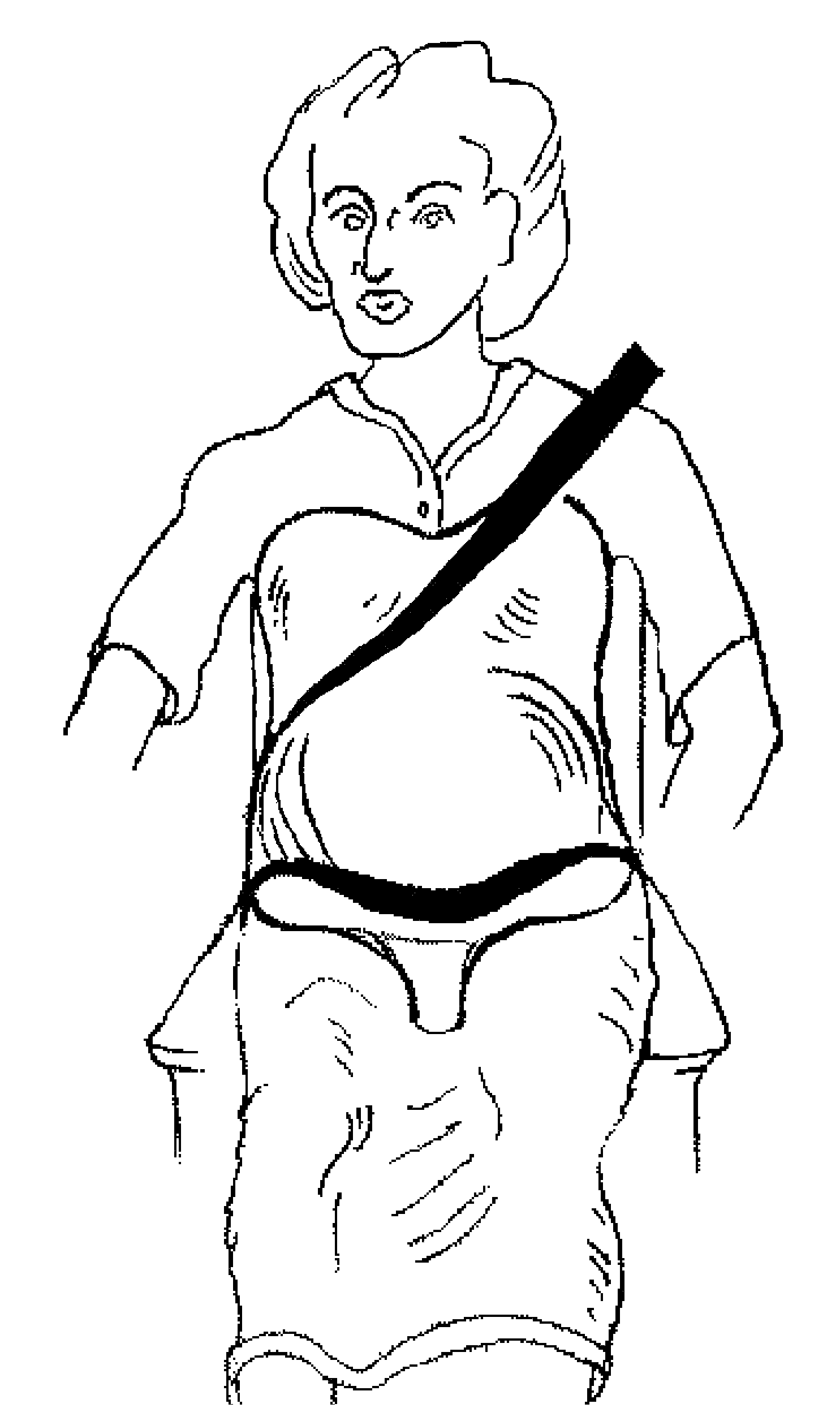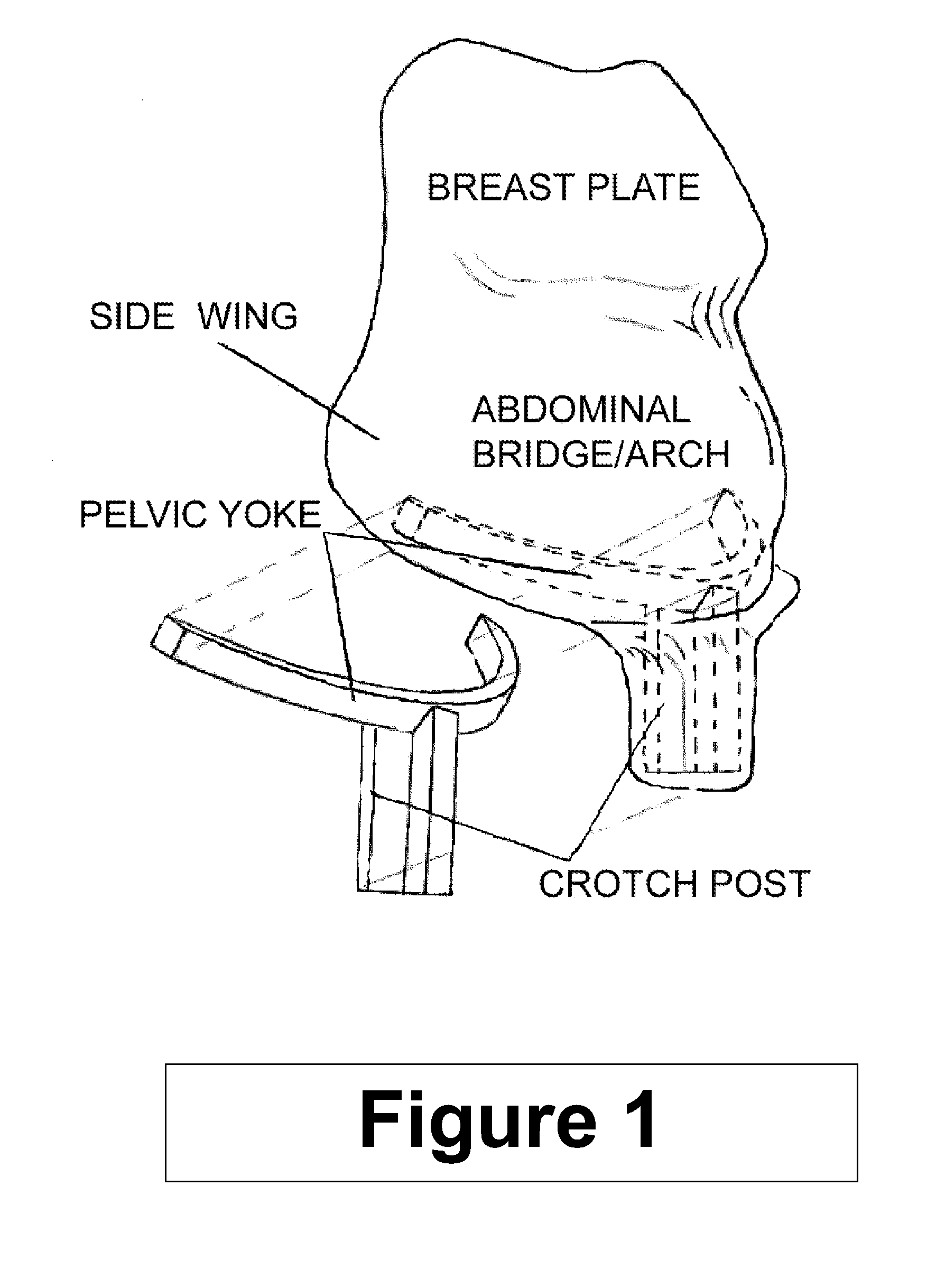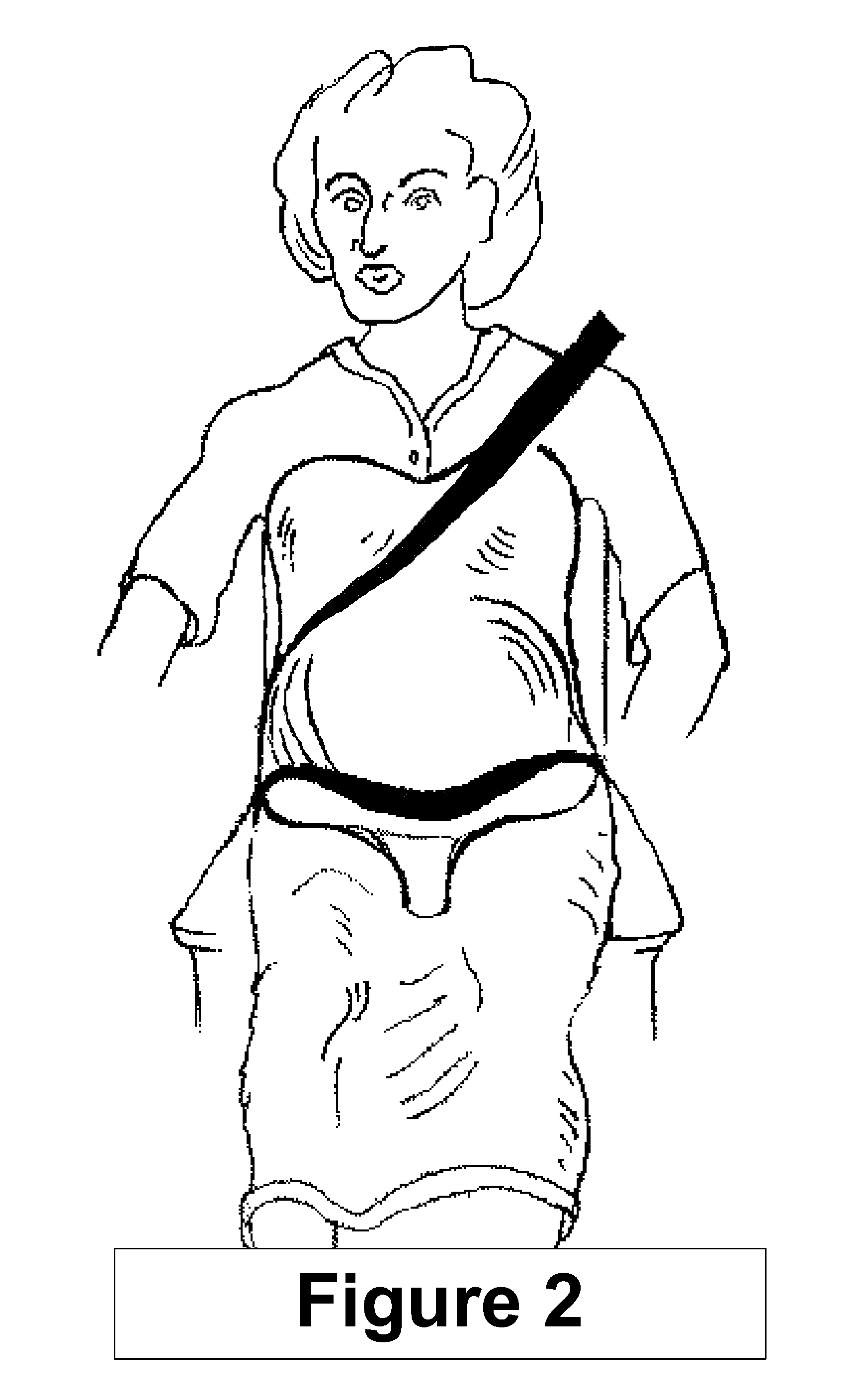Supplemental Automotive Restraint For Pregnant Women
a technology for pregnant women and automotive restraints, which is applied in the direction of pedestrian/occupant safety arrangements, vehicular safety arrangements, safety belts, etc., can solve the problems of reducing the use rate of seat belts. , to achieve the effect of reducing the likelihood of injury
- Summary
- Abstract
- Description
- Claims
- Application Information
AI Technical Summary
Benefits of technology
Problems solved by technology
Method used
Image
Examples
embodiment
Preferred Embodiment
[0033]In the preferred embodiment, the “Method / Device” is constructed primarily of inner and outer layers of fiber reinforced plastic to achieve the required strength and flexibility to provide a high level of supplemental protection to the mother and child in a crash. The “Pelvic Yoke” and “Crotch Post” will be composed of dense plastic foam or other material to reinforce and maintain spacing between the inner and outer layers of the “Abdominal Bridge / Shell” to add the structural rigidity required to carry the high bending loads that will occur in this area during a crash. “Filler / Padding Elements” materials consist of a variety of plastic foams, including semi rigid foams for the fill components, firm and highly damped flexible foams for the energy absorbing layers, and medium to light firmness foam for inner comfort and spacing layers.
[0034]Many materials could be used for this application, but care must be exercised to assure sufficient strength, flexibility ...
PUM
 Login to View More
Login to View More Abstract
Description
Claims
Application Information
 Login to View More
Login to View More - R&D
- Intellectual Property
- Life Sciences
- Materials
- Tech Scout
- Unparalleled Data Quality
- Higher Quality Content
- 60% Fewer Hallucinations
Browse by: Latest US Patents, China's latest patents, Technical Efficacy Thesaurus, Application Domain, Technology Topic, Popular Technical Reports.
© 2025 PatSnap. All rights reserved.Legal|Privacy policy|Modern Slavery Act Transparency Statement|Sitemap|About US| Contact US: help@patsnap.com



